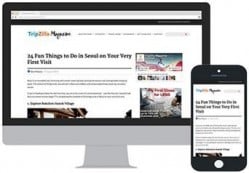Seoul’s subway system is one of the most efficient and affordable ways to get around the city. Trains run on time, most signs come in English, and the stations are generally clean and easy to navigate. Even if you don’t speak Korean, you can get pretty far with a transport card, a good app, and some basic know-how.
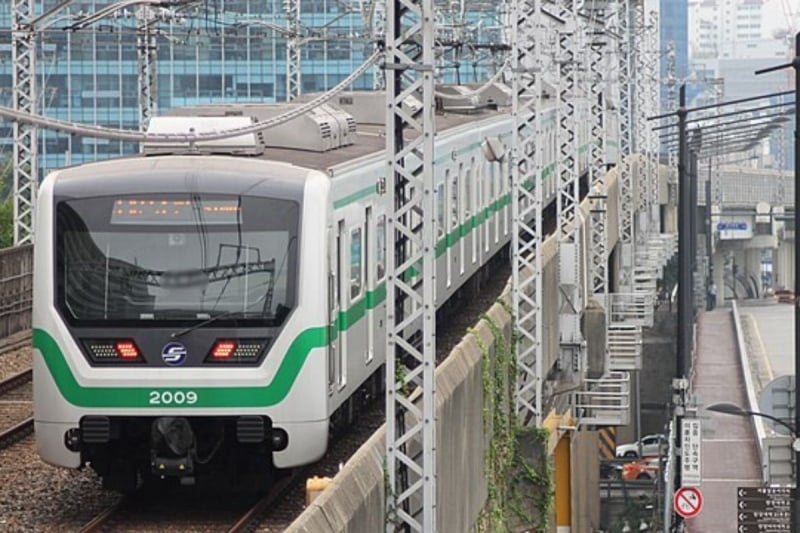
Image Credit: LERK via Wikimedia Commons
That said, using the subway for the first time can still be confusing. The map looks overwhelming, exits aren’t always close together, and topping up your card isn’t as straightforward if you’re used to tapping everything with your phone.
This guide walks you through the essentials so you can focus less on logistics and more on where you’re actually going.
Also read: How to Travel Around South Korea by Intercity Bus: A First-Timer’s Guide
1. The basics at a glance
The Seoul subway starts running around 5.30 am and winds down just before midnight. Exact timings can vary depending on the line and direction, so if you’re heading home late, it’s safest to double-check on an app like Kakao Metro or Naver Maps.
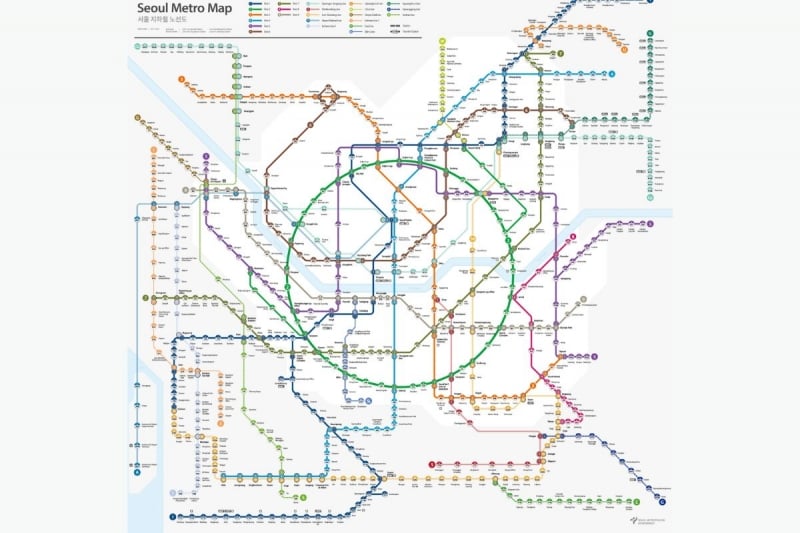
Image Credit: Seoul Metropolitan Government Official Website
There are over 20 lines in total, each marked by a colour and number. It might look overwhelming at first, but you’ll start recognising them quickly — Line 2 (green), Line 4 (blue), and Line 9 (brown) are some of the most common routes for visitors. Once you’re used to spotting the colours and following the arrows, navigating gets much easier.
2. Tickets, transport cards, and how much they cost
Option 1: Single-journey tickets
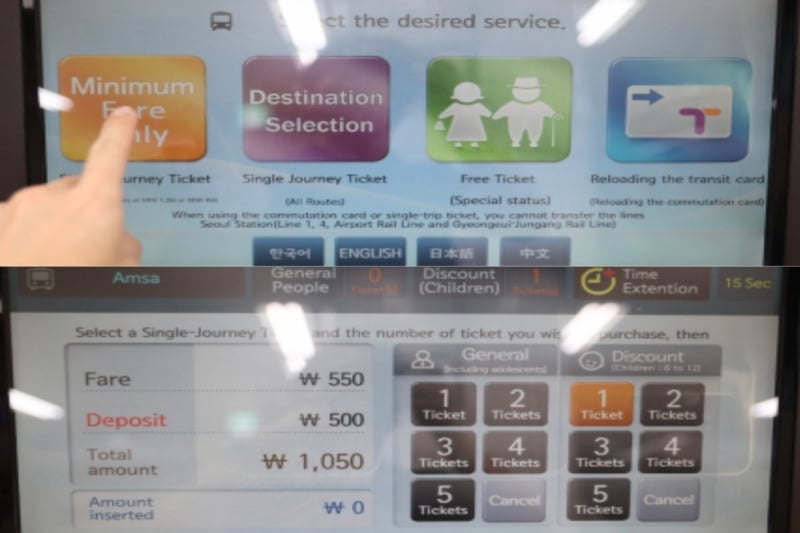
Image Credit: Visit Seoul Official Website
If you’re only riding the subway once or twice, you can buy a single-journey ticket at any station.
-
Use the ticket machine and select English
-
Choose your destination, insert cash, and collect the card
-
A ₩500 (S$0.50) deposit is required. You can get it back by returning the card at a “Deposit Refund Device” near the exit at your destination
These tickets are valid for one ride only. If your fare runs short, look for a fare adjustment machine near the turnstiles before exiting.
Option 2: T-money transport card
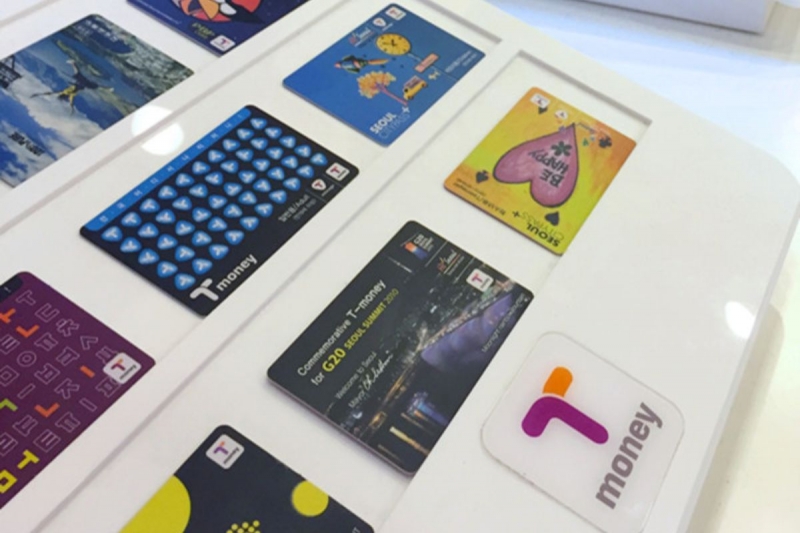
Image Credit: Visit Seoul Official Facebook Page
A T-money card is the most convenient option for most travellers. It works across the subway, bus, some taxis, and even at certain convenience stores and traditional markets.
-
You can buy it at the airport, convenience stores like CU or 7-Eleven, or subway stations.
-
The card itself costs ₩3,000 (S$3.00), not including any stored value
-
Top-ups are done in cash at machines or over the counter at convenience stores
Using a T-money card gives you discounted fares and allows free transfers between buses and subways if tapped properly on entry and exit.
Standard subway fares with T-money:
-
Adults (19 and above): ₩1,400 (S$1.40)
-
Teenagers (13–18): ₩800 (S$0.80)
-
Children (6–12): ₩500 (S$0.50)
Option 3: T-money M-Pass
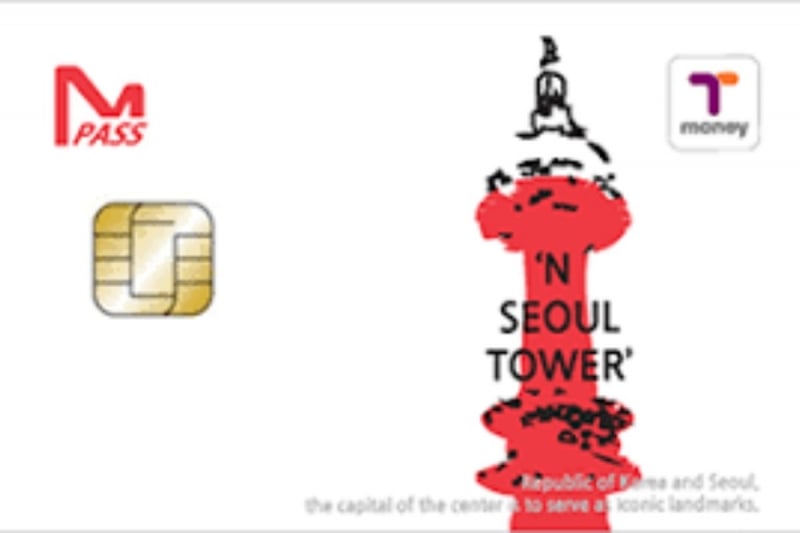
Image Credit: T-money Card & Pat Official Website
If you plan to take public transport many times a day, consider the M-Pass. It offers up to 20 rides daily on most subways and buses.
-
Valid for 1 to 7 days, priced from ₩15,000 to ₩64,500 (S$15 to S$64.50)
-
Can be purchased at T-money Town in Seoul Station
-
It also functions like a regular T-money card for other small purchases
Additional charges
Certain lines and longer distances come with extra costs:
-
For trips between 10 and 50 kilometres: ₩100 (S$0.10) is added every 5 kilometres
-
Beyond 50 kilometres: ₩100 (S$0.10) is added every 8 kilometres
-
Some lines like the Airport Railroad (AREX), Sinbundang, Everline, and Ui-Sinseol LRT have separate surcharge structures
These are applied automatically when you tap in and out, so no extra action is needed so just be aware of that when planning longer trips.
Also read: Seoul Bus Guide for Tourists: How to Ride, What the Colours Mean & Why It’s Worth It
3. Apps to download before your trip
Google Maps doesn’t work well for public transport in Korea due to local mapping restrictions. Instead, these apps are designed for Korea’s transport system and offer more accurate, real-time information.
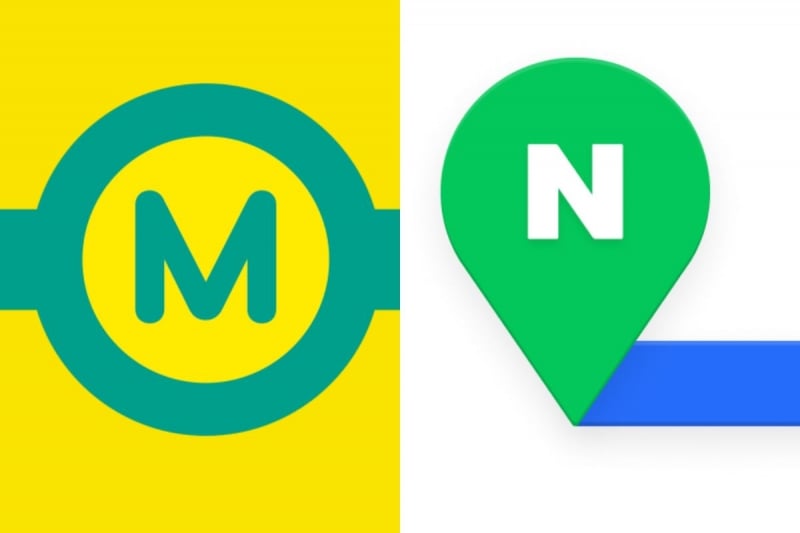
Image Credit (L-R): Kakao Metro App; Naver Map App
- Kakao Metro: One of the most reliable subway apps in Korea. It provides real-time arrival times, platform info, transfer routes, and which train door to stand at for a quicker exit. Available in English.
- Naver Maps: This is Korea’s version of Google Maps. It covers subways, buses, and walking routes. It also gives updates on train schedules, exit numbers, and expected travel time between stations. Comes in English and is very detailed, though it may feel slightly cluttered at first.
- T-money Pay: Useful if you’re using a T-money card and want to track your balance or top up online. Some cards and passes support in-app top-ups via credit card, though most machines in stations still require cash.
Also read: Best Korea Travel Apps to Download For Your Trip in 2025
4. How to ride the subway, step by step
Once you’ve got your transport card sorted, using the subway is pretty straightforward. But if it’s your first time, here’s what to expect.
Entering the station
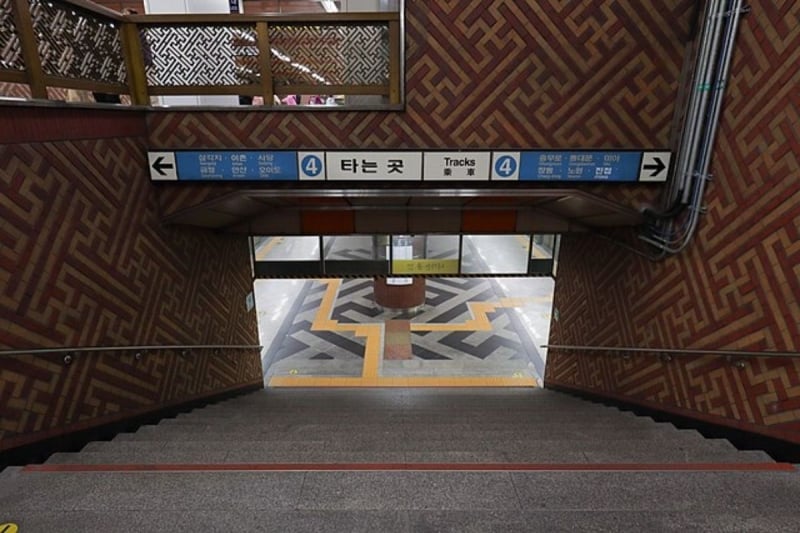
Image Credit: Mobius6 via Wikimedia Commons
You’ll usually spot the entrance by the line number and colour (for example, a green circle for Line 2). Head down and follow the signs toward the platform. Most stations have multiple entrances and exits, so don’t worry too much yet, you’ll figure out which one to use when you’re leaving.
At the turnstile, tap your card on the reader. The screen will show your remaining balance, and the gate will open once the fare registers.
Finding your platform
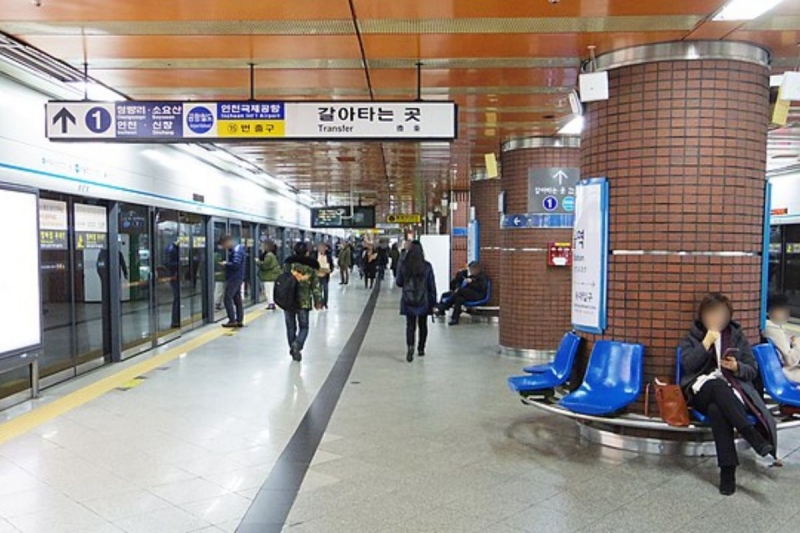
Image Credit: LERK via Wikimedia Commons
Inside the station, follow the signs to your train line. They’re colour-coded and often include arrows with the name of the final station in that direction. This helps you figure out which side of the platform to stand on.
Most platforms have overhead screens showing how many minutes until the next train. Trains usually arrive every 4–6 minutes during the day, and more frequently during peak hours.
On the train
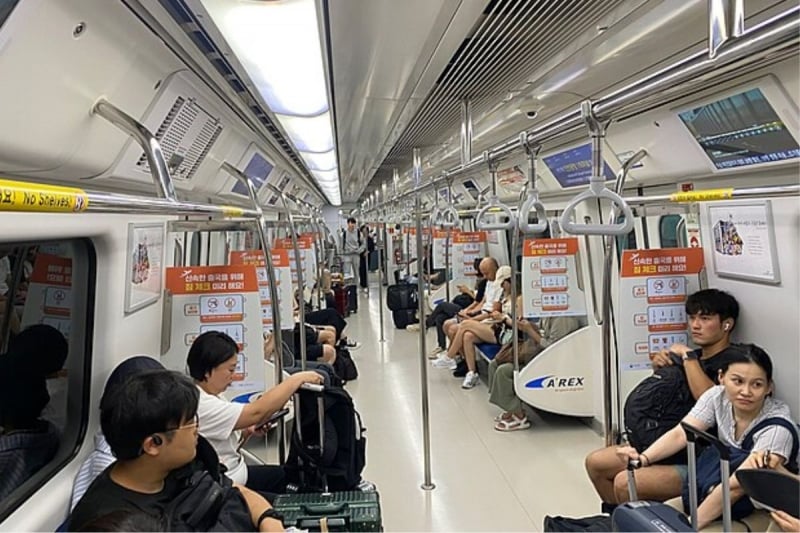
Image Credit: Sgroey via Wikimedia Commons
Announcements are made in Korean, English, and sometimes Chinese. You’ll hear which station is next and which side the doors will open on. If you’re standing, you’ll notice many people rushing to the doors just before they open, especially during rush hour. It’s normal. Just hold your ground if you’re waiting to exit, and move quickly once the doors open.
Transferring lines
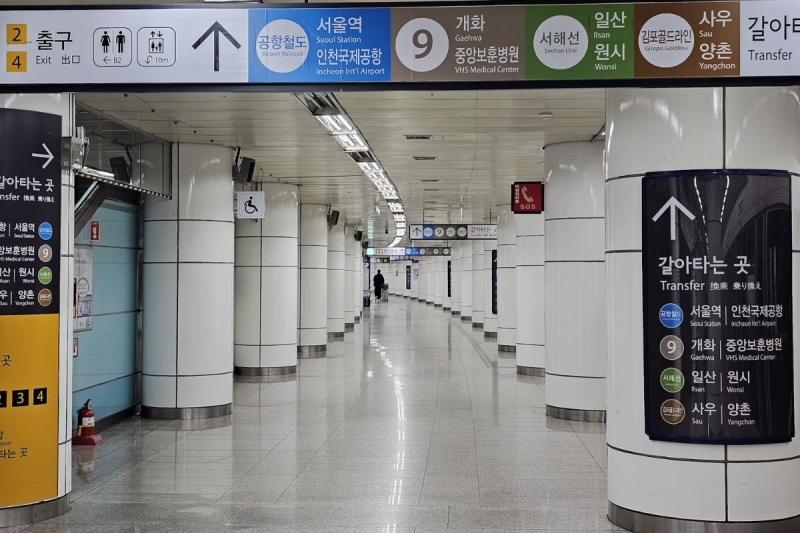
Image Credit: KS KYUNG | Unsplash
If you need to switch trains, just follow the colored transfer signs after getting off. Most transfers happen within the same paid area, so you don’t have to tap your card again. Some transfer corridors are long, so don’t be surprised if you end up walking a few minutes between lines.
Leaving the station
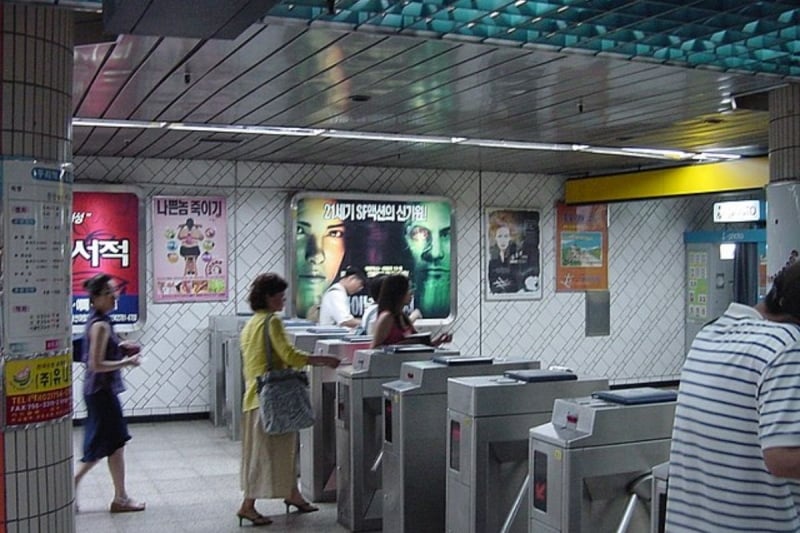
Image Credit: Alex C via Wikimedia Commons
When you arrive, tap your card at the exit turnstile. If your card doesn’t have enough balance, the gate won’t open, but there’s usually a top-up machine nearby where you can add cash. Most of these machines still only accept physical Korean won, so it’s a good idea to keep a small amount on you. That said, T-money is gradually rolling out support for Apple Wallet and mobile top-ups, so this might get easier shortly, depending on your card type.
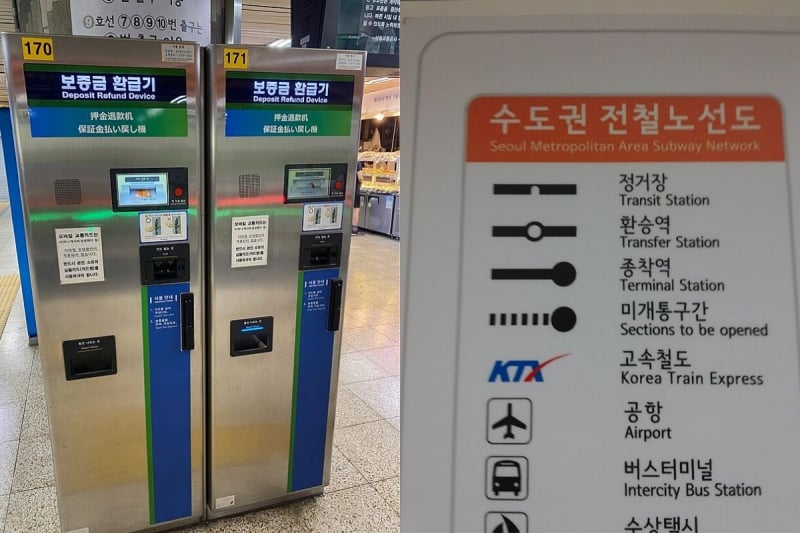
Image Credit (L-R): Sgroey via Wikimedia Commons; Camins via Wikimedia Commons
If you’re using a single-journey ticket, don’t throw it away. Look for the “Deposit Refund Device” near the exit to get back your 500 won (S$0.50) deposit. There’s no way to claim this later if you forget.
Once you’re through the gates, pay attention to the exit numbers. Seoul stations often have ten or more exits, and some are spaced quite far apart. Taking the wrong one could leave you across a major intersection or several blocks away from where you meant to be. If you’re unsure, check the wall maps near the exits or use Naver Maps to confirm which number to follow.
5. Subway etiquette you’ll want to know
Seoul’s subway is fast and efficient, but it also runs on a strong sense of unspoken order. Most locals follow the rules without needing reminders, so as a visitor, it helps to observe and match the flow.
Wait behind the lines
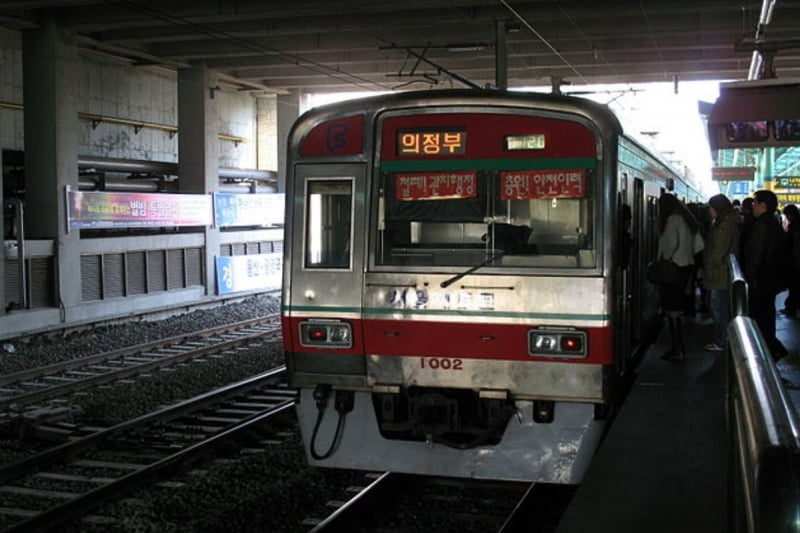
Image Credit: User:IRTC1015 via Wikimedia Commons
At each platform, you’ll see arrows or numbered boxes showing where the train doors will open. People queue behind these marks and wait for everyone inside to get off before boarding. Cutting in or crowding the door is frowned upon, even during peak hours.
Priority seats are not for you
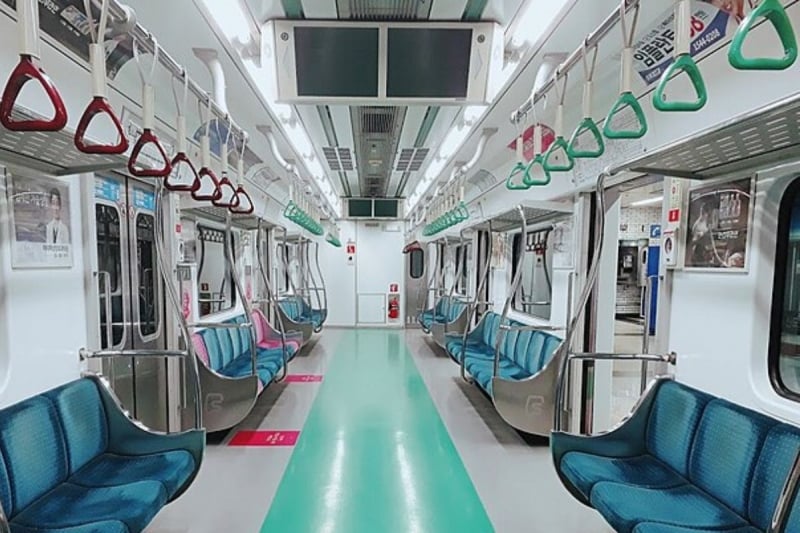
Image Credit: Brit in Seoul via Wikimedia Commons
There are marked priority seats at the ends of each car. Even if the train is packed and the seat is empty, it’s considered rude to sit there unless you’re elderly, pregnant, disabled, or accompanying someone who is. Locals usually avoid them entirely, and you should too.
Keep noise to a minimum
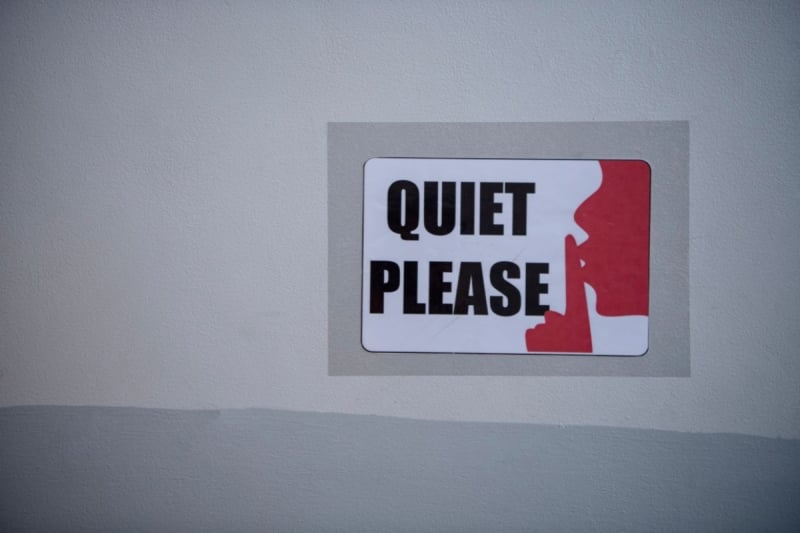
Image Credit: yingtanthawarak via Canva Pro
Talking loudly or playing music or videos without headphones is seen as inconsiderate. Most people keep to themselves, scroll on their phones, or nap. If you’re chatting with a friend, try to keep your volume low, especially during busy hours.
Escalator rules matter
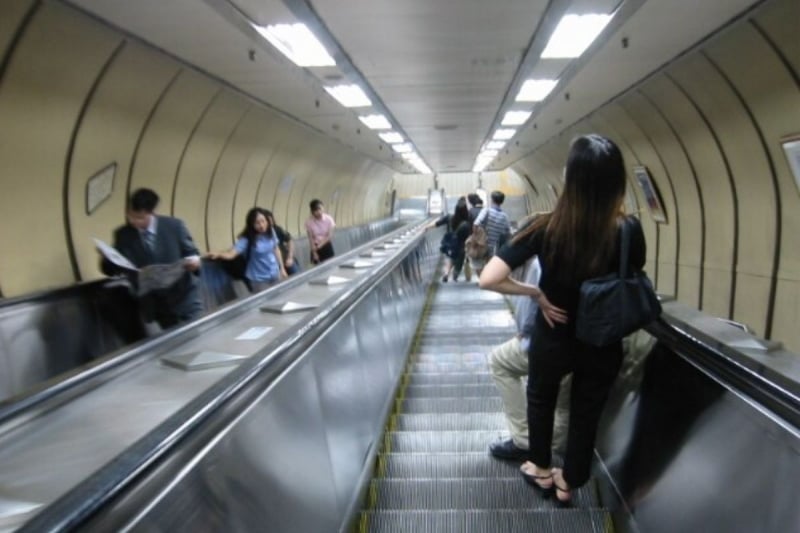
Image Credit: pravin.premkumar via Wikimedia Commons
If you’re not in a rush, stand on the right. The left side is for people walking up. This is especially important in larger stations where crowds are moving fast.
No eating, no mess
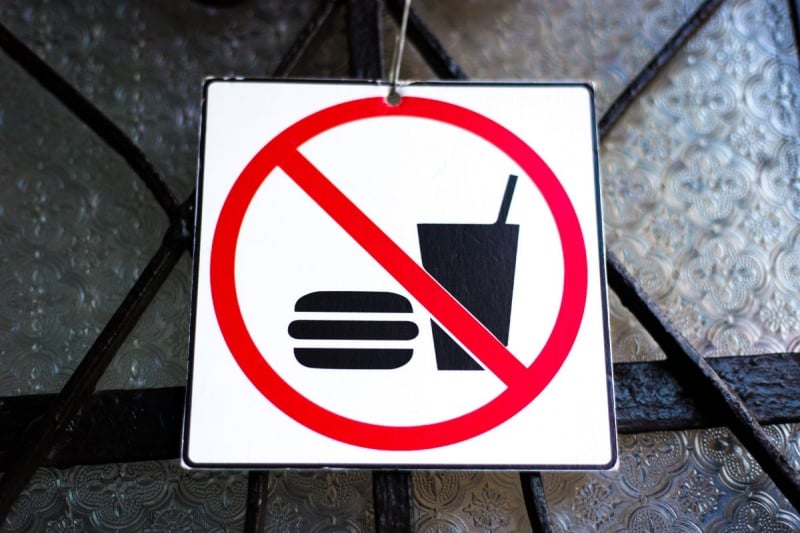
Image Credit: yingtanthawarak via Canva Pro
Eating or drinking on the train isn’t allowed, and though you won’t always be fined, it’s considered bad manners. Even water or coffee is generally avoided. Keep your snacks tucked away until you’re out of the station.
Also read: How to Ride the KTX in South Korea: Tips & Tricks for a Smooth Journey
6. Feeling too hot or cold on the train?
Subway cars in Seoul are usually air-conditioned, but that doesn’t mean they always feel comfortable. In 2025 alone, over 283,000 complaints were filed — mostly about trains being too hot or too cold, especially during rush hours (7–9am, 6–8pm).
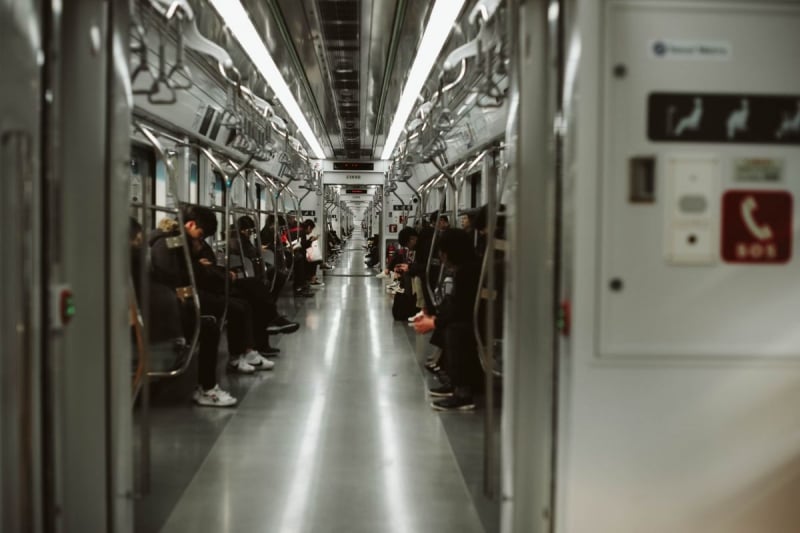
Image Credit: Oat Appleseed | Unsplash
While temperatures are meant to stay around 24°C in summer and 18°C in winter, crowded cars tend to feel warmer. If you run cold, try the 4th or 7th car on Lines 1, 3, and 4, or the 4th and 5th cars on Lines 5–7. Line 2 has no designated warmer cars.
You can even report discomfort using the Ttota Subway app under “Report an Incident.”
7. Facilities inside subway stations
Seoul’s subway stations aren’t just for getting from point A to point B. Many of them are surprisingly well-equipped, especially if you’re in a busy area or transferring between lines.
Lockers
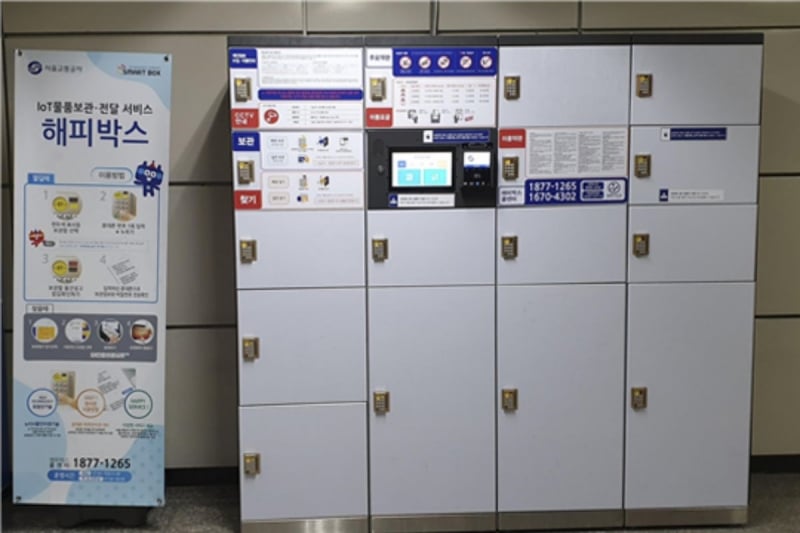
Image Credit: Seoul Metropolitan Government Official Website
If you’re carrying heavy shopping bags or checking out of your hotel early, look for coin lockers in the station. You can store your belongings for a few hours or longer, and most lockers accept payment via T-money cards. Sizes and prices vary, but availability is generally good at major stations.
Convenience stores and food
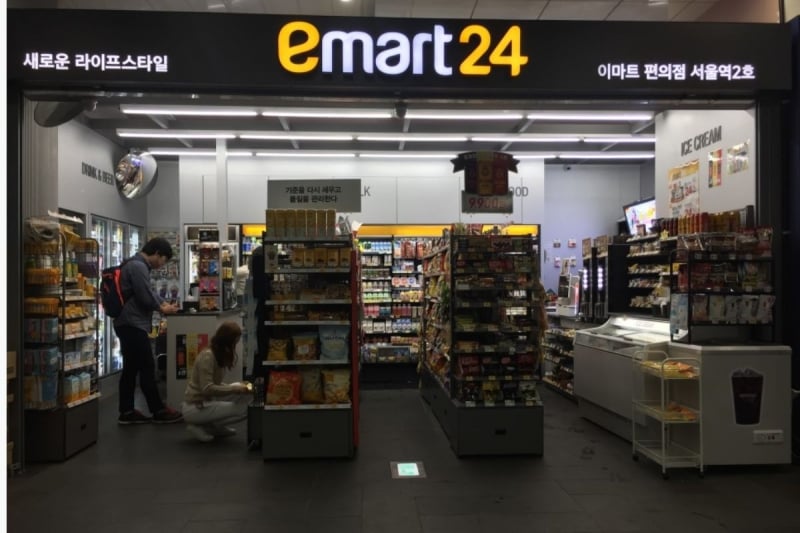
Image Credit: AREX Official Website
Most stations have at least one convenience store (like CU or 7-Eleven), and many larger stations have small restaurants, bakeries, or snack stalls inside. You can grab a quick bite or pick up drinks and essentials before heading out.
Elevators and wheelchair lifts
Most modern stations are equipped with elevators, though older or less central ones may still rely on stairs and escalators. If you’re travelling with luggage, a stroller, or need wheelchair access, check ahead using Naver Maps. Some stations also have dedicated wheelchair lifts, but availability varies.
Nursing rooms
Several stations offer breastfeeding rooms or nursing spaces, marked with a bottle icon on station maps in Naver. If there’s no icon or if it’s greyed out, that means the facility isn’t available at that station.
Also read: 6 Underrated Places You Should Visit in South Korea (That Aren’t Seoul)
Final thoughts
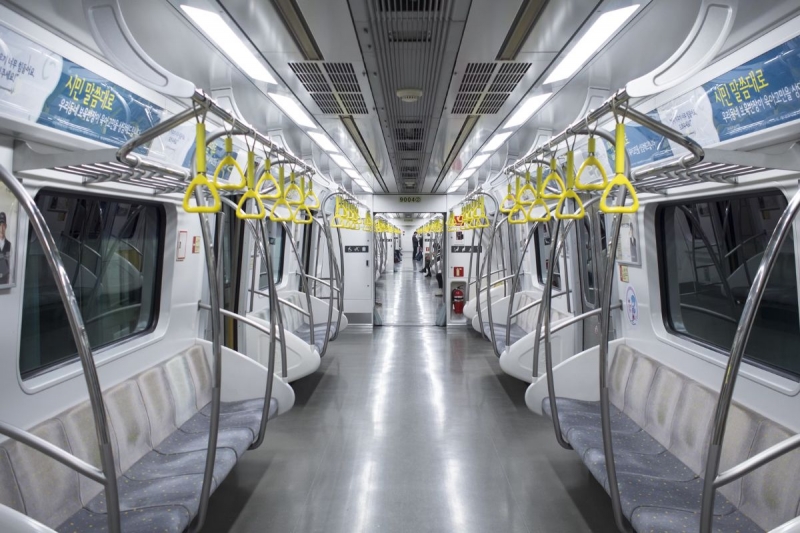
Image Credit: Adam Chang | Unsplash
Riding the Seoul subway might feel intimidating at first, but once you get the hang of it, it’s one of the easiest ways to explore the city. With a T-money card in your pocket and the right app on your phone, you’ll be able to move through the city quickly and affordably. Give yourself a trip or two to get used to the rhythm, and you’ll be navigating like a local in no time.




